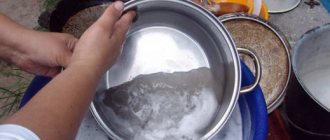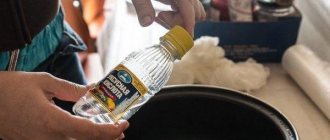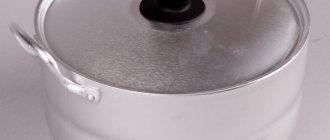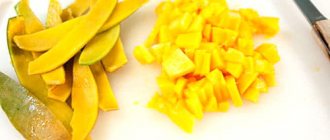Natural stone has a unique texture that can decorate any architectural element (floor and wall coverings, fountains, steps and balusters of stairs, statues and tombstones, flowerpots, etc.). In order for it to be pleasing to the eye, it must be shown. Since ancient times, grinding and polishing of natural stone has been used for this purpose. These operations gave the coatings a special, ceremonial look. Special machines and tools help ensure high-quality processing. To select them correctly, you need to know the features of the technology and the capabilities of the equipment.
What is stone grinding and polishing?
Grinding is the processing of stone mechanically using abrasive or diamond tools. It is necessary to level the surface, remove defects (scratches, dents, cracks, etc.), and eliminate installation defects. After this procedure, the surface becomes smooth, but with a certain degree of roughness.
Polishing is a finishing process using mechanical and chemical methods to obtain a smooth surface. After this operation, the mirror shine of the stone appears. Its specific texture and texture (color shades, tints, veins) appear. Polishing not only provides an aesthetic appearance, but also increases the material’s resistance to contamination, aggressive substances, and mechanical abrasion.
Why are minerals refined?
Refinement is a physical and chemical effect on cut or natural unprocessed products.
Amethysts are often processed. Initially, this mineral is transparent or with a barely noticeable color. When heated, it turns yellow and resembles citrine.
Pink topaz does not exist in nature. A stone of this color is obtained through refining.
Tanzanites with a natural brown tint are often processed. After heating, it acquires blue and purple tones.
Refinement increases the value of a gemstone by 20-25%.
Equipment and tools
For stone processing, workshops and workshops use special grinding and polishing rotary machines. Natural stone has high hardness, which requires the use of high-power equipment. A 2.2 kW stone grinding machine, a 5.5 kW/380V knee-lever type grinding and polishing machine, and a bridge type polishing machine have proven themselves.
Lever grinding and polishing machine “Blesk” (Gantelstan, Russia)
A special grinding tool helps ensure high-quality processing:
1. Fickerts. These are special abrasive plates with a diamond layer that have a dovetail fastening.
Fickerts
2. Frankfurt. Diamond and abrasive attachments are used, mounted on a rotating disk.
Frankfurt
3. Stone cutters. Used for primary processing. Bakelite, synthetic and diamond cutters of cylindrical and cone shape are used. Grit size - from No. 16 to No. 500.
Sharoshki
4. Veils. These are face grinding wheels for toggle machines. Metal, organic, plastic and rubber veils are used. For particularly important elements, diamond-coated wheels are used.
Diamond end mills (DAF)
5. Diamond flexible grinding wheels (AGShK) - “turtles”. They can have a diameter of 50, 80, 100, 115 and 125 mm. The fraction of diamond chips is determined by number (30-3000 and BUFF).
Diamond flexible grinding wheels (AGShK) or “turtles”
6. Diamond grinding wheels (ADG) - diamond “cups”. Standard sizes: 50-100, 125-180 and 208 mm. Can be attached to angle grinders.
Diamond grinding wheels (AShK)
7. Diamond grinding sponges. They are used for manual finishing of the surface when processing in hard-to-reach places, for processing edges, small parts and for removing chips after mechanical impact. Popular sponges are Diam-S and KGS.
8. Brushes. Abrasive and diamond brushes are used for aging and brushing the surface of the stone.
9. Diamond skins. They have different grain sizes and are used for manual finishing of the process.
10. Felt for polishing. Polishing wheels of different diameters are formed from it. The following varieties are used: fine-wool, semi-coarse-wool and coarse-wool felt to provide different degrees of processing.
Felt polishing wheels
Important! Abrasive grinding stones and other specified tools can be mounted on the working part of special machines or on the shaft of household power tools (grinder, electric drill). Fine finishing can be done manually.
Cutting or splitting
In order to polish natural stone you need:
- Crack the mineral and remove all excess particles and substances.
- If the stone is large, then to prepare it you need to use special equipment: a clamp or a metal vice with a special double fastening.
- To cut stone, use diamond saws or circles, which are sold in special stores.
A machine for cutting minerals can be made on the basis of an electric drilling device or a sharpener. In general, various electric motors can be used for processing minerals, provided that the rotation speed reaches 3 thousand revolutions per minute and their power ranges from 0.25 to 0.5 kW.
Nuances to consider while working:
- To soundproof the machine, the supports and the bottom of the box must be covered with felt or rubber.
- Under the side table of the machine you need to place a tray with water to cool the cutting wheel.
Important! You can reduce friction by adding a little laundry soap to the water.
- You need to place a second tray with water under the faceplate.
- During cutting, the mineral must be fed along the guide bar.
- The gem should be fed towards the rotating circle that cuts it.
- To make the stone stable, its edge is cut off, creating a supporting platform.
- To cut a large mineral, you need to make an incision by inserting three wedges of steel plates into the grooves. Hitting the wedges easily breaks the stone.
- Defective areas of valuable rocks can be glued with epoxy glue. This can be done before cutting the stone.
Grinding technology
Depending on the workpiece, coarse or fine grinding can be performed. For example, for building blocks, stair steps, rough paving stones. The entire stone grinding process can be divided into the following stages:
- Alignment of ends. It is necessary to give the slabs or blocks the correct geometric shape. An even cut is formed, all irregularities remaining after cutting the stone are removed.
- Rough processing. Most often, it is necessary to remove a thick layer, and therefore water cooling of the working area is used. When working, an abrasive is used to grind the coarsest grain size. Additional coarse quartz sand can be applied to the surface. With this treatment, steps are eliminated at the junction of slabs (blocks), large defects are removed, and the curved surface is leveled. Typically, discs of the largest diameter (more than 100 mm) are installed.
- Finish grinding. During this process, nozzles and tools with fine abrasive grains are installed. Processing is carried out in several stages with the transition from coarse-grained to fine-grained abrasive (diamond coating). The pressure on the surface of the stone gradually decreases. After finishing sanding, a flat, smooth surface should be formed, but with a matte finish.
When grinding, it is important to choose the correct abrasive number. Recommendations for selection are given in the table.
| Selecting the abrasive fraction of the grinding tool | ||
| № | Defect size, mm | Abrasive fraction |
| 1 | up to 1.5 | 80–100 |
| 2 | 1,5–5 | 40–60 |
| 3 | more than 5 | 30–40 |
Reference! When sanding, it is important to remember that a large amount of dust is generated. When working, you must use protective equipment - goggles, a respirator, gloves, closed clothing.
Polishing technology
The final finishing of the stone is achieved by polishing. This operation is carried out in the following order:
- Moistening the material. The entire surface is wetted with water from a spray bottle.
- Primary processing. At the first stage, rough marks left after sanding are removed. Tool No. 50 is installed with a gradual transition to No. 100. As a result, all visible defects should disappear.
- Second stage of smoothing. It starts with installing a nozzle No. 200, moving to No. 400, and then No. 800. The smoothness increases significantly, the structure of the stone appears, but the surface remains matte. The shine begins to appear at the final stage when processed with nozzle No. P1500.
- Final polishing. Machining is completed with P3000 and Buff attachments. The shine appears more clearly. Final polishing and consolidation of the result is achieved by using diamond glass polishing paste. When processing soft minerals (including marble), it is recommended to use wax to polish the stone. These compositions are evenly distributed over the surface using felt circles at a minimum rotation speed.
Important! The final polishing is done by hand. The master achieves a uniform texture of the stone and a shiny surface. Hard-to-reach places and small parts are handled carefully.
Surface treatment
If the mineral has an attractive shape and shines from polishing, then it’s time to start coating the stone with a special protective and decorative agent. In a specialty store you can find a wide range of products that have various effects (highlighting the structure of a mineral or creating a “wet look”). It is worth noting that in this case the economic side of the issue must be excluded, since an incorrectly selected product will reduce all efforts to zero.
Important! Before purchasing a product, you need to study its composition, because some components can enter into a chemical reaction with the mineral, ruining its structure or surface.
Marble grinding and polishing
Processing marble requires a special approach. This material is durable and beautiful, but has increased porosity, and, therefore, stains quickly appear on its surface. To prevent this, protection is required. Marble can only be polished after complete polishing. In this case, diamond polishing paste and other special compounds must be used. Our machines are well suited for grinding and polishing marble.
Crystallization of marble surface
The water absorption of marble can be reduced by its crystallization, i.e. surface treatment with a special acid-based substance after polishing. The mineral reacts with it and a protective film is formed. Before the crystallization procedure, the surface of the marble is thoroughly cleaned of stubborn stains and dried.
CRISTALLINE ADRIA powder, base composition AKEMI, AK1, powder for CRISTALLO marble are used as a crystallizer. The powder is pre-mixed with water. The crystallizer is carefully and evenly applied to the entire marble surface. Distribution is carried out using metallized felt. The surface is covered with a polymer film for 40-48 hours. After crystallization is complete, the composition is thoroughly washed off. It is important to remember that it contains acid and can cause skin burns. When working it is necessary to use protective equipment.
Caring for marble surfaces
Crystallization of marble protects it for 1.5–2 years. After this, the stone begins to fade and loses its former attractiveness. To preserve it, it is necessary to regularly clean the surface. It is recommended to wash the coating with detergents intended for dishes. To remove stains, you can use an aqueous solution of baking soda (45-50 g per 1 liter of water).
If the protective properties are lost, new polishing should be carried out. To do this, first a fine polishing is carried out using a machine with a felt disc. Then, it is recommended to apply silicone sealant (Tytan Professional, Silirub MA, Lugato Marmor + Granit, KRASS). After impregnating the surface with it, after 20-25 minutes you should apply the crystallizer paste AKEMI, AK2 for 15-20 minutes. The surface is wiped dry and left to dry for 7-8 hours. This treatment is recommended once every 2 years.
Preliminary preparation
Before starting work, you should check the softness of the stone to see if it is suitable for polishing. To do this, take a pocket knife and try to carefully scratch the surface. If there is a white mark left or a grainy mark, the stone is not suitable for work; polishing will make it loose. If there is a shiny mark left, the stone is hard and you can work with it.
When checking, you must hold the knife away from you and do not press it too hard - it may slip.
If it is necessary to polish a found stone, first it is given the desired shape using a chisel and hammer. If the stone is large, with large ridges, the ridges will need to be chipped away. At the end, you need to rinse it and remove all dirt.
Source ratatum.com
Granite grinding and polishing
Granite grinding is done on machines or using grinder attachments at home. The process is carried out in a standard manner (rough and rough processing, fine grinding). The final stage is polishing. In workshops, it should be carried out on a special machine for polishing granite using moisture. AShK (“turtles”) are used as nozzles.
Water when polishing granite
Granite polishing is done with water cooling. Water is sprayed into the work area using a spray bottle. It not only cools the instrument, but also deposits dust. Polishing begins with wheels No. 50 and 100. Then, “turtles” No. 200, 400, and so on up to 3000 are installed one by one. To achieve various effects, polishing pastes based on chromium, aluminum, iron, tin or calcium are used. Chromium paste changes color.
Crystallization of granite
Crystallization of granite is a chemical process that involves a special substance containing calcium. As a result, a protective film is formed and micropores are filled. The surface density of the material increases. Powder and liquid crystallizers are used, which differ in composition from those used for marble. This procedure should be entrusted to professionals who have the appropriate equipment and chemical reagents.
Care of granite surfaces
Granite surfaces require, although not complicated, regular maintenance. First of all, timely cleaning is carried out. Dirt can be cleaned with ordinary detergents. To maintain shine, granite is rubbed with wax polishes. Particular attention is paid to traces of mold, lime and cement mortar. If they are detected, immediate action must be taken using strong solvents.
It is recommended to regularly treat granite coating with a special soap to protect the granite. A film is formed that protects dirt from penetrating deep into the surface. The finish on the outside of the wall should be impregnated with special compounds. You can use modern products with silicone and wax. Significant defects should be filled with an acrylic-based composition.
Features of polishing other natural stones
The technology of grinding and polishing different types of stone can vary significantly, which is due to their different density, fragility, and porosity. When processing hard stones, diamond attachments and water cooling are required. For soft minerals, polymer and rubber discs can be used. The choice of abrasive according to grain size is also determined by the hardness of the material. In some cases, when polishing, a resin compound is used - a special resin.
Some color shades also require a special approach. Thus, to ensure a rich black color, it is recommended to use brushes for artificial aging. When polishing agglomerates, special pastes are required. Crystallizers are effective in protecting travertine, limestone, onyx, shell rock and spar.
Grinding and polishing natural stone gives it an attractive appearance. These operations can be carried out with your own hands using ordinary power tools. However, the quality and durability of stone coatings can only be ensured on special machines equipped with professional tools. In specialized shops and workshops, not only high-quality processing is provided, but also reliable protection of polished surfaces.











